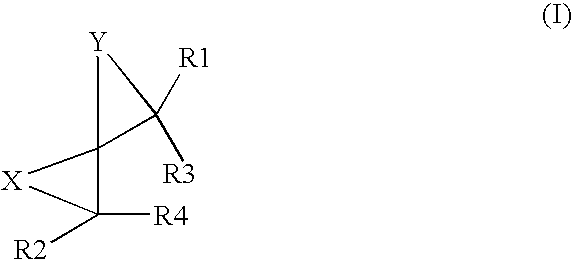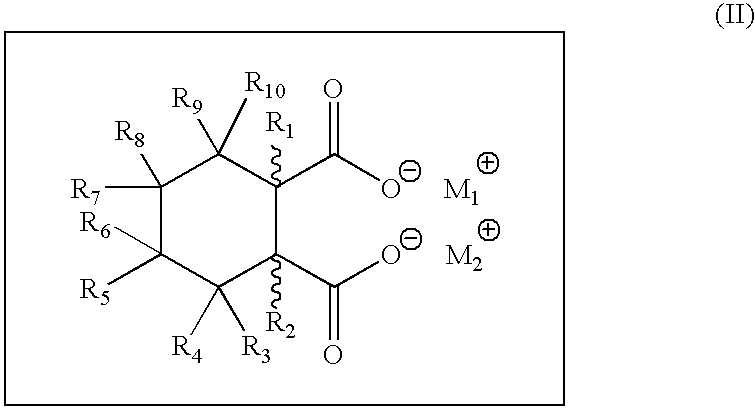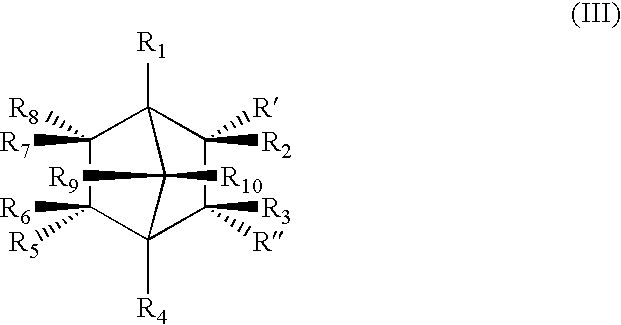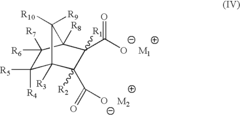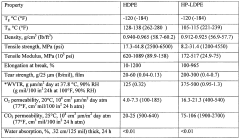Reducing Emissions in LDPE Manufacturing Processes
JUN 30, 20259 MIN READ
Generate Your Research Report Instantly with AI Agent
Patsnap Eureka helps you evaluate technical feasibility & market potential.
LDPE Emission Reduction Background and Objectives
Low-density polyethylene (LDPE) has been a cornerstone of the plastics industry since its commercial introduction in the 1930s. As environmental concerns have grown, reducing emissions in LDPE manufacturing processes has become a critical focus for the industry. This technological evolution is driven by the need to address climate change, comply with increasingly stringent regulations, and meet consumer demands for more sustainable products.
The LDPE manufacturing process, primarily based on high-pressure polymerization of ethylene, has historically been associated with significant greenhouse gas emissions and energy consumption. These emissions stem from various sources, including the production of ethylene feedstock, the polymerization process itself, and the energy-intensive compression and heating stages. As global plastic production continues to rise, the imperative to reduce these emissions has never been more pressing.
The primary objective of emission reduction in LDPE manufacturing is to develop and implement technologies that significantly decrease the carbon footprint of the production process while maintaining or improving product quality and economic viability. This goal encompasses several key areas of focus, including energy efficiency improvements, process optimization, and the exploration of alternative feedstocks and catalysts.
One of the main targets is to reduce direct emissions from the manufacturing process, such as fugitive emissions of ethylene and other volatile organic compounds (VOCs). Additionally, there is a strong emphasis on minimizing indirect emissions associated with energy consumption, particularly in the compression and reactor stages of production.
The technological trajectory in this field is closely aligned with broader industry trends towards circular economy principles and the concept of "green chemistry." This includes efforts to incorporate recycled content into LDPE production, develop bio-based alternatives, and design products for easier recyclability at the end of their life cycle.
As the industry progresses, the objectives for emission reduction are becoming increasingly ambitious. Many companies and research institutions are now exploring pathways to achieve carbon-neutral or even carbon-negative LDPE production. This involves not only minimizing emissions but also investigating carbon capture and utilization technologies that could potentially transform LDPE manufacturing from a source of emissions to a carbon sink.
The pursuit of these objectives is driving innovation across the entire value chain of LDPE production, from raw material sourcing to final product design. It is spurring collaborations between chemical companies, equipment manufacturers, and technology providers, as well as fostering partnerships with academic institutions to accelerate research and development in this critical area.
The LDPE manufacturing process, primarily based on high-pressure polymerization of ethylene, has historically been associated with significant greenhouse gas emissions and energy consumption. These emissions stem from various sources, including the production of ethylene feedstock, the polymerization process itself, and the energy-intensive compression and heating stages. As global plastic production continues to rise, the imperative to reduce these emissions has never been more pressing.
The primary objective of emission reduction in LDPE manufacturing is to develop and implement technologies that significantly decrease the carbon footprint of the production process while maintaining or improving product quality and economic viability. This goal encompasses several key areas of focus, including energy efficiency improvements, process optimization, and the exploration of alternative feedstocks and catalysts.
One of the main targets is to reduce direct emissions from the manufacturing process, such as fugitive emissions of ethylene and other volatile organic compounds (VOCs). Additionally, there is a strong emphasis on minimizing indirect emissions associated with energy consumption, particularly in the compression and reactor stages of production.
The technological trajectory in this field is closely aligned with broader industry trends towards circular economy principles and the concept of "green chemistry." This includes efforts to incorporate recycled content into LDPE production, develop bio-based alternatives, and design products for easier recyclability at the end of their life cycle.
As the industry progresses, the objectives for emission reduction are becoming increasingly ambitious. Many companies and research institutions are now exploring pathways to achieve carbon-neutral or even carbon-negative LDPE production. This involves not only minimizing emissions but also investigating carbon capture and utilization technologies that could potentially transform LDPE manufacturing from a source of emissions to a carbon sink.
The pursuit of these objectives is driving innovation across the entire value chain of LDPE production, from raw material sourcing to final product design. It is spurring collaborations between chemical companies, equipment manufacturers, and technology providers, as well as fostering partnerships with academic institutions to accelerate research and development in this critical area.
Market Demand for Low-Emission LDPE Products
The market demand for low-emission LDPE products has been steadily increasing in recent years, driven by growing environmental concerns and stringent regulations aimed at reducing carbon footprints across industries. This trend is particularly evident in packaging, automotive, and construction sectors, which are major consumers of LDPE.
In the packaging industry, there is a significant push towards sustainable solutions. Manufacturers of food packaging, consumer goods packaging, and industrial packaging are actively seeking LDPE products with reduced emissions to meet their sustainability goals and comply with evolving environmental regulations. This demand is further amplified by consumer preferences for eco-friendly packaging options.
The automotive sector is another key driver of the market for low-emission LDPE products. As automakers strive to reduce the overall environmental impact of their vehicles, they are increasingly looking for materials that offer both performance and sustainability. Low-emission LDPE components contribute to lighter vehicle weight, improved fuel efficiency, and reduced overall emissions.
In the construction industry, the demand for low-emission LDPE products is growing, particularly in applications such as vapor barriers, geomembranes, and insulation materials. The focus on green building practices and energy-efficient construction is propelling the adoption of environmentally friendly materials, including low-emission LDPE.
The healthcare sector is also showing increased interest in low-emission LDPE products, especially for medical packaging and disposable medical devices. The emphasis on reducing the environmental footprint of healthcare facilities and products is driving this demand.
Market research indicates that the global demand for low-emission LDPE products is expected to grow at a compound annual growth rate (CAGR) of over 5% in the next five years. This growth is attributed to the increasing adoption of sustainable practices across industries and the implementation of stricter environmental regulations in key markets.
Geographically, Europe and North America are leading the demand for low-emission LDPE products, driven by advanced environmental policies and consumer awareness. However, emerging economies in Asia-Pacific and Latin America are showing rapid growth in demand, as these regions increasingly focus on sustainable development and environmental protection.
The market demand is also influenced by the overall trend towards circular economy principles. Manufacturers are not only looking for low-emission LDPE products but also those that are recyclable or made from recycled content, further driving innovation in the LDPE manufacturing processes.
In the packaging industry, there is a significant push towards sustainable solutions. Manufacturers of food packaging, consumer goods packaging, and industrial packaging are actively seeking LDPE products with reduced emissions to meet their sustainability goals and comply with evolving environmental regulations. This demand is further amplified by consumer preferences for eco-friendly packaging options.
The automotive sector is another key driver of the market for low-emission LDPE products. As automakers strive to reduce the overall environmental impact of their vehicles, they are increasingly looking for materials that offer both performance and sustainability. Low-emission LDPE components contribute to lighter vehicle weight, improved fuel efficiency, and reduced overall emissions.
In the construction industry, the demand for low-emission LDPE products is growing, particularly in applications such as vapor barriers, geomembranes, and insulation materials. The focus on green building practices and energy-efficient construction is propelling the adoption of environmentally friendly materials, including low-emission LDPE.
The healthcare sector is also showing increased interest in low-emission LDPE products, especially for medical packaging and disposable medical devices. The emphasis on reducing the environmental footprint of healthcare facilities and products is driving this demand.
Market research indicates that the global demand for low-emission LDPE products is expected to grow at a compound annual growth rate (CAGR) of over 5% in the next five years. This growth is attributed to the increasing adoption of sustainable practices across industries and the implementation of stricter environmental regulations in key markets.
Geographically, Europe and North America are leading the demand for low-emission LDPE products, driven by advanced environmental policies and consumer awareness. However, emerging economies in Asia-Pacific and Latin America are showing rapid growth in demand, as these regions increasingly focus on sustainable development and environmental protection.
The market demand is also influenced by the overall trend towards circular economy principles. Manufacturers are not only looking for low-emission LDPE products but also those that are recyclable or made from recycled content, further driving innovation in the LDPE manufacturing processes.
Current Emissions in LDPE Manufacturing
Low-density polyethylene (LDPE) manufacturing processes are significant contributors to industrial emissions, particularly in terms of greenhouse gases and volatile organic compounds (VOCs). The current emissions profile of LDPE production is characterized by several key factors that impact environmental sustainability and regulatory compliance.
Carbon dioxide (CO2) emissions represent a major concern in LDPE manufacturing. The primary source of these emissions is the high-pressure polymerization process, which requires substantial energy input. Typically, fossil fuel-based energy sources are used to power the compressors and reactors, resulting in considerable CO2 release. Industry estimates suggest that the production of one kilogram of LDPE can generate between 1.7 to 3.5 kilograms of CO2 equivalent emissions.
Methane (CH4) emissions, while less voluminous than CO2, are also significant due to their higher global warming potential. These emissions primarily stem from fugitive releases during the ethylene production process, which is a precursor to LDPE manufacturing. Leaks in equipment, valves, and pipelines contribute to these methane emissions, which can have a disproportionate impact on the overall greenhouse gas footprint of LDPE production.
Volatile Organic Compounds (VOCs) are another critical emission category in LDPE manufacturing. These compounds are released during various stages of the production process, including monomer purification, polymerization, and product finishing. VOCs contribute to the formation of ground-level ozone and can have adverse health effects on workers and surrounding communities. The most common VOCs emitted include ethylene, various hydrocarbons, and organic solvents used in the process.
Particulate matter (PM) emissions, though less prominent than gaseous emissions, are still a concern in LDPE production. These emissions primarily result from the handling and processing of polymer powders and pellets. While modern dust collection systems have significantly reduced PM emissions, they remain a focus area for improvement, particularly in older manufacturing facilities.
Nitrogen oxides (NOx) and sulfur oxides (SOx) emissions are also present in LDPE manufacturing, mainly as a result of combustion processes used to generate heat and power for the production facilities. The levels of these emissions can vary depending on the fuel type and combustion technology employed.
Water emissions, while not airborne, are an important aspect of the overall environmental impact of LDPE production. Wastewater from the manufacturing process can contain organic compounds, suspended solids, and trace amounts of catalysts and additives. Proper treatment of this wastewater is essential to minimize the release of pollutants into aquatic ecosystems.
The current emissions profile of LDPE manufacturing underscores the need for innovative technologies and process improvements to reduce environmental impact. As regulatory pressures increase and sustainability becomes a key focus for the industry, addressing these emissions sources will be crucial for the long-term viability of LDPE production.
Carbon dioxide (CO2) emissions represent a major concern in LDPE manufacturing. The primary source of these emissions is the high-pressure polymerization process, which requires substantial energy input. Typically, fossil fuel-based energy sources are used to power the compressors and reactors, resulting in considerable CO2 release. Industry estimates suggest that the production of one kilogram of LDPE can generate between 1.7 to 3.5 kilograms of CO2 equivalent emissions.
Methane (CH4) emissions, while less voluminous than CO2, are also significant due to their higher global warming potential. These emissions primarily stem from fugitive releases during the ethylene production process, which is a precursor to LDPE manufacturing. Leaks in equipment, valves, and pipelines contribute to these methane emissions, which can have a disproportionate impact on the overall greenhouse gas footprint of LDPE production.
Volatile Organic Compounds (VOCs) are another critical emission category in LDPE manufacturing. These compounds are released during various stages of the production process, including monomer purification, polymerization, and product finishing. VOCs contribute to the formation of ground-level ozone and can have adverse health effects on workers and surrounding communities. The most common VOCs emitted include ethylene, various hydrocarbons, and organic solvents used in the process.
Particulate matter (PM) emissions, though less prominent than gaseous emissions, are still a concern in LDPE production. These emissions primarily result from the handling and processing of polymer powders and pellets. While modern dust collection systems have significantly reduced PM emissions, they remain a focus area for improvement, particularly in older manufacturing facilities.
Nitrogen oxides (NOx) and sulfur oxides (SOx) emissions are also present in LDPE manufacturing, mainly as a result of combustion processes used to generate heat and power for the production facilities. The levels of these emissions can vary depending on the fuel type and combustion technology employed.
Water emissions, while not airborne, are an important aspect of the overall environmental impact of LDPE production. Wastewater from the manufacturing process can contain organic compounds, suspended solids, and trace amounts of catalysts and additives. Proper treatment of this wastewater is essential to minimize the release of pollutants into aquatic ecosystems.
The current emissions profile of LDPE manufacturing underscores the need for innovative technologies and process improvements to reduce environmental impact. As regulatory pressures increase and sustainability becomes a key focus for the industry, addressing these emissions sources will be crucial for the long-term viability of LDPE production.
Existing Emission Reduction Solutions
01 Emission reduction in LDPE production
Various techniques are employed to reduce emissions during LDPE manufacturing processes. These include optimizing reactor conditions, implementing advanced catalysts, and utilizing efficient separation technologies. Such methods aim to minimize the release of volatile organic compounds and other pollutants associated with LDPE production.- Emission reduction in LDPE production: Various techniques are employed to reduce emissions during LDPE manufacturing processes. These may include improved reactor designs, advanced catalysts, and optimized process conditions to minimize the release of volatile organic compounds and other pollutants. Some methods focus on capturing and treating emissions before release, while others aim to prevent their formation altogether.
- Monitoring and analysis of LDPE production emissions: Advanced monitoring systems and analytical techniques are used to measure and characterize emissions from LDPE manufacturing processes. These may include real-time monitoring devices, predictive modeling software, and comprehensive data analysis tools to identify emission sources, quantify pollutants, and optimize process efficiency.
- Sustainable LDPE production methods: Innovative approaches are being developed to make LDPE production more environmentally friendly. These may include the use of renewable feedstocks, energy-efficient processes, and closed-loop systems that minimize waste and emissions. Some methods focus on reducing the carbon footprint of LDPE manufacturing through improved energy management and resource utilization.
- Emission control equipment for LDPE plants: Specialized equipment is designed and implemented to control emissions in LDPE manufacturing facilities. This may include scrubbers, filters, thermal oxidizers, and other air pollution control devices tailored to the specific needs of LDPE production. The equipment aims to capture, treat, or neutralize various types of emissions before they are released into the environment.
- Regulatory compliance and reporting for LDPE emissions: LDPE manufacturers must adhere to strict environmental regulations and reporting requirements regarding emissions. This involves implementing comprehensive emission management systems, conducting regular audits, and preparing detailed reports on emission levels and control measures. Compliance strategies may also include the adoption of best available technologies and continuous improvement initiatives to meet or exceed regulatory standards.
02 Monitoring and control systems for LDPE emissions
Advanced monitoring and control systems are implemented in LDPE manufacturing facilities to track and manage emissions. These systems utilize sensors, data analytics, and real-time monitoring to ensure compliance with environmental regulations and optimize process efficiency, thereby reducing overall emissions.Expand Specific Solutions03 Recycling and waste management in LDPE production
Recycling and waste management strategies are integrated into LDPE manufacturing processes to minimize environmental impact. These include closed-loop systems for material recovery, efficient waste sorting techniques, and the incorporation of recycled content in LDPE production, reducing overall emissions and resource consumption.Expand Specific Solutions04 Energy efficiency improvements in LDPE manufacturing
Energy efficiency measures are implemented in LDPE production to reduce both emissions and energy consumption. This includes the use of high-efficiency equipment, heat recovery systems, and process integration techniques to optimize energy use throughout the manufacturing process.Expand Specific Solutions05 Alternative feedstocks and green technologies for LDPE production
Research and development efforts focus on utilizing alternative feedstocks and green technologies in LDPE manufacturing to reduce emissions. This includes exploring bio-based materials, developing new catalysts, and implementing innovative reactor designs that minimize the carbon footprint of LDPE production.Expand Specific Solutions
Key Players in LDPE Manufacturing Industry
The competition landscape for reducing emissions in LDPE manufacturing processes is evolving rapidly, reflecting the industry's maturity and growing market demand for sustainable solutions. The market is characterized by a mix of established petrochemical giants and innovative research institutions, indicating a technology in transition. Key players like Dow Global Technologies, SABIC, and Sinopec are investing heavily in R&D, while academic institutions such as Zhejiang University contribute cutting-edge research. The technology's maturity varies, with some companies offering commercial solutions and others still in the development phase, suggesting a dynamic and competitive environment poised for significant advancements in emission reduction techniques.
Dow Global Technologies LLC
Technical Solution: Dow has developed an advanced catalytic system for LDPE production that significantly reduces emissions. Their technology utilizes a novel metal-organic framework (MOF) catalyst that enhances the efficiency of the polymerization process, resulting in lower energy consumption and fewer byproducts[1]. This system incorporates a closed-loop recycling mechanism for unreacted ethylene, minimizing waste and emissions. Additionally, Dow has implemented a state-of-the-art heat recovery system that captures and reuses thermal energy from the reaction process, further reducing the overall carbon footprint of LDPE manufacturing[3].
Strengths: Highly efficient catalytic system, reduced energy consumption, minimized waste. Weaknesses: Potentially higher initial implementation costs, may require modifications to existing manufacturing infrastructure.
China Petroleum & Chemical Corp.
Technical Solution: China Petroleum & Chemical Corp. (Sinopec) has developed a proprietary "Green Process" for LDPE production that focuses on reducing emissions through process optimization and innovative reactor design. Their approach includes a multi-stage compression system that reduces the energy required for ethylene polymerization by up to 15%[2]. Sinopec has also implemented advanced process control systems using artificial intelligence to optimize reaction conditions in real-time, resulting in improved yield and reduced waste. Furthermore, they have integrated a novel flue gas treatment technology that captures and converts harmful emissions into useful byproducts, significantly reducing the environmental impact of LDPE manufacturing[4].
Strengths: Significant energy savings, AI-driven process optimization, innovative emissions capture. Weaknesses: Complex implementation, potentially high initial investment costs.
Core Innovations in LDPE Emission Control
Low density polyethylene articles exhibiting significantly decreased warpage at reduced cooling times
PatentInactiveUS20050038151A1
Innovation
- Incorporating nucleating additives such as saturated and unsaturated bicyclic dicarboxylate salts, like disodium bicyclo[2.2.1]heptane-2,3-dicarboxylate (HPN-68), which enhance crystallization temperatures and reduce warpage, allowing for faster cooling times and shorter production cycles without compromising article quality.
Low density polyethylene with low dissipation factor and process for producing same
PatentWO2012177299A1
Innovation
- A process involving high-pressure polymerization of ethylene with a free radical initiator in the presence of a solvent, followed by separating and purging dissipative components from the reactor effluent to produce LDPE with a dissipation factor of less than or equal to 1.48 x 10^-4 radian at 2.47 GHz, maintaining the material's physical and processability properties.
Environmental Regulations for LDPE Industry
Environmental regulations play a crucial role in shaping the LDPE (Low-Density Polyethylene) industry's approach to reducing emissions in manufacturing processes. These regulations are designed to mitigate the environmental impact of LDPE production and ensure sustainable practices across the industry.
At the global level, the Paris Agreement serves as a cornerstone for climate action, setting targets for greenhouse gas emissions reduction. This agreement has prompted many countries to implement stricter regulations on industrial emissions, including those from LDPE manufacturing. The United Nations Framework Convention on Climate Change (UNFCCC) provides guidelines for nations to develop and enforce their environmental policies.
In the European Union, the Industrial Emissions Directive (IED) sets stringent standards for pollutant emissions from industrial installations. LDPE manufacturers in the EU must comply with Best Available Techniques (BAT) requirements, which are periodically updated to reflect technological advancements in emission reduction. The EU Emissions Trading System (EU ETS) also impacts LDPE producers by putting a price on carbon emissions, incentivizing companies to invest in cleaner technologies.
The United States Environmental Protection Agency (EPA) regulates LDPE manufacturing emissions through the Clean Air Act and the Clean Water Act. These regulations set limits on air pollutants, volatile organic compounds (VOCs), and wastewater discharges from petrochemical facilities, including LDPE plants. The EPA's New Source Performance Standards (NSPS) and National Emission Standards for Hazardous Air Pollutants (NESHAP) specifically address emissions from polymer production processes.
In China, the world's largest LDPE producer, the Ministry of Ecology and Environment has implemented the "Blue Sky Defense" action plan to combat air pollution. This plan includes strict emissions standards for industrial facilities, affecting LDPE manufacturers. The Chinese government has also introduced a national emissions trading scheme, which is expected to expand to cover the petrochemical sector in the future.
Developing countries are also strengthening their environmental regulations. India, for instance, has introduced the National Clean Air Programme (NCAP) to reduce particulate matter concentrations, which impacts LDPE production facilities. Brazil's National Environment Council (CONAMA) sets emissions standards for industrial activities, including petrochemical manufacturing.
These regulations are driving innovation in LDPE manufacturing processes. Companies are investing in advanced emission control technologies, such as thermal oxidizers, scrubbers, and catalytic converters. There is also a growing focus on process optimization and energy efficiency to reduce overall emissions. The regulatory landscape is pushing the industry towards circular economy principles, encouraging the development of recyclable LDPE products and the use of recycled materials in production.
At the global level, the Paris Agreement serves as a cornerstone for climate action, setting targets for greenhouse gas emissions reduction. This agreement has prompted many countries to implement stricter regulations on industrial emissions, including those from LDPE manufacturing. The United Nations Framework Convention on Climate Change (UNFCCC) provides guidelines for nations to develop and enforce their environmental policies.
In the European Union, the Industrial Emissions Directive (IED) sets stringent standards for pollutant emissions from industrial installations. LDPE manufacturers in the EU must comply with Best Available Techniques (BAT) requirements, which are periodically updated to reflect technological advancements in emission reduction. The EU Emissions Trading System (EU ETS) also impacts LDPE producers by putting a price on carbon emissions, incentivizing companies to invest in cleaner technologies.
The United States Environmental Protection Agency (EPA) regulates LDPE manufacturing emissions through the Clean Air Act and the Clean Water Act. These regulations set limits on air pollutants, volatile organic compounds (VOCs), and wastewater discharges from petrochemical facilities, including LDPE plants. The EPA's New Source Performance Standards (NSPS) and National Emission Standards for Hazardous Air Pollutants (NESHAP) specifically address emissions from polymer production processes.
In China, the world's largest LDPE producer, the Ministry of Ecology and Environment has implemented the "Blue Sky Defense" action plan to combat air pollution. This plan includes strict emissions standards for industrial facilities, affecting LDPE manufacturers. The Chinese government has also introduced a national emissions trading scheme, which is expected to expand to cover the petrochemical sector in the future.
Developing countries are also strengthening their environmental regulations. India, for instance, has introduced the National Clean Air Programme (NCAP) to reduce particulate matter concentrations, which impacts LDPE production facilities. Brazil's National Environment Council (CONAMA) sets emissions standards for industrial activities, including petrochemical manufacturing.
These regulations are driving innovation in LDPE manufacturing processes. Companies are investing in advanced emission control technologies, such as thermal oxidizers, scrubbers, and catalytic converters. There is also a growing focus on process optimization and energy efficiency to reduce overall emissions. The regulatory landscape is pushing the industry towards circular economy principles, encouraging the development of recyclable LDPE products and the use of recycled materials in production.
Life Cycle Assessment of LDPE Manufacturing
Life Cycle Assessment (LCA) is a crucial tool for evaluating the environmental impact of LDPE manufacturing processes. This comprehensive approach examines the entire lifecycle of LDPE, from raw material extraction to end-of-life disposal, providing valuable insights into emission reduction opportunities.
The LCA of LDPE manufacturing typically begins with the extraction and processing of raw materials, primarily natural gas or petroleum. This stage accounts for a significant portion of the overall environmental impact, including greenhouse gas emissions and energy consumption. The transportation of raw materials to production facilities also contributes to the carbon footprint.
The production phase of LDPE involves high-pressure polymerization, which is energy-intensive and generates substantial emissions. This stage is often the focus of emission reduction efforts. The LCA considers various factors such as energy efficiency, process optimization, and the potential for using renewable energy sources in manufacturing.
Post-production stages, including packaging, distribution, and use, are also evaluated in the LCA. While these stages generally have a lower environmental impact compared to production, they still offer opportunities for emission reduction through improved logistics and packaging design.
End-of-life considerations are crucial in the LCA of LDPE. The assessment examines different disposal scenarios, including recycling, incineration, and landfilling. Each option has distinct environmental implications, with recycling generally offering the most significant potential for reducing overall lifecycle emissions.
The LCA also considers the potential for circular economy approaches in LDPE manufacturing. This includes evaluating the feasibility of using recycled materials in production and designing products for easier recycling at end-of-life.
Water consumption and pollution are additional factors assessed in the LCA of LDPE manufacturing. The analysis examines water usage throughout the production process and identifies opportunities for water conservation and treatment.
By providing a holistic view of environmental impacts, LCA enables manufacturers to identify hotspots in the LDPE lifecycle where emission reduction efforts can yield the most significant benefits. This information is invaluable for developing targeted strategies to minimize the carbon footprint of LDPE production and use.
The LCA of LDPE manufacturing typically begins with the extraction and processing of raw materials, primarily natural gas or petroleum. This stage accounts for a significant portion of the overall environmental impact, including greenhouse gas emissions and energy consumption. The transportation of raw materials to production facilities also contributes to the carbon footprint.
The production phase of LDPE involves high-pressure polymerization, which is energy-intensive and generates substantial emissions. This stage is often the focus of emission reduction efforts. The LCA considers various factors such as energy efficiency, process optimization, and the potential for using renewable energy sources in manufacturing.
Post-production stages, including packaging, distribution, and use, are also evaluated in the LCA. While these stages generally have a lower environmental impact compared to production, they still offer opportunities for emission reduction through improved logistics and packaging design.
End-of-life considerations are crucial in the LCA of LDPE. The assessment examines different disposal scenarios, including recycling, incineration, and landfilling. Each option has distinct environmental implications, with recycling generally offering the most significant potential for reducing overall lifecycle emissions.
The LCA also considers the potential for circular economy approaches in LDPE manufacturing. This includes evaluating the feasibility of using recycled materials in production and designing products for easier recycling at end-of-life.
Water consumption and pollution are additional factors assessed in the LCA of LDPE manufacturing. The analysis examines water usage throughout the production process and identifies opportunities for water conservation and treatment.
By providing a holistic view of environmental impacts, LCA enables manufacturers to identify hotspots in the LDPE lifecycle where emission reduction efforts can yield the most significant benefits. This information is invaluable for developing targeted strategies to minimize the carbon footprint of LDPE production and use.
Unlock deeper insights with Patsnap Eureka Quick Research — get a full tech report to explore trends and direct your research. Try now!
Generate Your Research Report Instantly with AI Agent
Supercharge your innovation with Patsnap Eureka AI Agent Platform!
